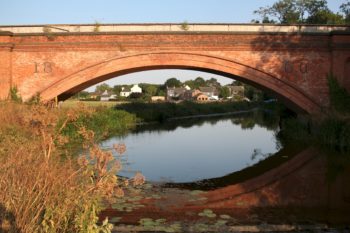Unlocking bioresource market growth
Competition: Breakthrough 2: Catalyst
Amount awarded: £314,316
Led by: Anglian Water
Partners: Business Modelling Associates UK Ltd, Thames Water, Yorkshire Water, Northumbrian Water, Southern Water
Project completed: May 2023
Water cycle tag: Bioresources, resource recovery and circularity
In 2020 Ofwat created a new price control covering the transport, treatment and disposal activities related to the treatment and safe disposal of sewage sludge. Sewage sludge once treated is known commonly as biosolids and Ofwat named the new price control Bioresources, a broader term to reflect the range of products derived as a result of the treatment process.
A key objective of creating the new price control was to encourage third party market entrants and/or trading between water and sewerage companies (WaSC) to drive efficiency and delivery value for customers.
To date market activity has been limited, particularly for the treatment of sewage sludge, activity has largely been limited to short term trades between WaSC’s to address shortfalls in capacity as a result of planned or unplanned outages at existing sludge treatment facilities, very few if any contracts exist for long term trades or with third party providers.
To encourage and facilitate market activity Ofwat introduced requirements for WaSCs to publish market information covering their bioresources activities, this includes volumes, quality and locations of sewage sludge produced, locations, capacity and information on treatment type as sludge treatment facilities. Whilst publishing of the information gives possible entrants to bioresources markets or neighbouring WaSCs visibility this did not stimulate a significant increase in activity, whilst there are many reasons for this a significant barrier was seen to be complexity of decision making when evaluating a market or trading solution.
The initiative seeks to enable collaborative development of the bioresources market solution using a mature prescriptive analytics platform.
This will be achieved by integrating into a single decision support platform, the bioresource value chains of Anglian Water and 4 other WaSC’s, equivalent to circa 50% of the total sludge production for England and Wales.
Various scenarios have been developed using an advanced digital business twin showing potential benefits of collaboration, through cross-border movements and shared investments, to meet common goals. This initiative is based on data available in the public domain.
The initiative relies on the experience of Business Modelling Applications in building Advanced Digital Business Twins. The technology is matured over a decade of successful applications and relies on the Decision Intelligence capabilities supported by the Decisio AI-assisted, cloud-based platform.
The model outcomes are based on high level assumptions and time horizons. That is the quality of the input data will have a direct impact on the direct usability of the model results. The model uses annual time horizons and excludes inter year operational impacts (such as unplanned maintenance on key assets etc.). The model can provide strategic insights and directional impacts of simulated scenarios.
BMA’s Decisio™ Decision Processor enables planning functions to become more connected through its AI-assisted Digital Business Twins that understand an organisation’s end-to-end value chain with integrated financials, and asset & operational data across multiple nested timeframes.
The key themes from this project are summarised below:
A) Data Availability can be improved.
The initiative was often limited by the availability of published data. While the data gathered by OFWAT was useful for high level analysis more detail could provide better insight. The areas where information was most lacking was on growth projections and impact of WINEP scheme, asset age, wastewater treatment headroom to deal with return liquors, constraints on future plant expansion, reason for reported reductions in capacity and landbank availability.
B) Optimisation of current networks has a significant benefit.
The benefit is due to the optimisation within the constraints. The difference in costs is led by better utilisation of capacity, optimised logistics and no double handling of material. Planned and unplanned downtime events cannot be replicated and therefore the values published for the optimised scenario represents the best-case, which in practice can hardly be achieved due to real-life operational constraints.
C) There is benefit in short-term collaboration.
In a scenario where no new investment is made there is a benefit from opening up the company borders. This benefit is in the form of higher throughput through digestions facilities and a reduction of lime treated cake in this scenario, which represents the least desirable outlet when landbank is available.
D) Long term collaboration creates more robust networks.
When investments are allowed the difference between the open and closed networks becomes more significant when external challenges affect the network. The impact of a closure of landbank, the reduction in asset availability or the increase in capital costs all show a relatively higher opportunity in an open network scenario.
E) The impact of regulatory changes is significant.
The impact of the closure of the landbank is very significant. The emissions increase more than two-fold, while the need for capital increases by more than 6 times and the operating costs also increase.
F) There are different ways to stimulate the sector to achieve Net Zero
Three options were tested to stimulate the sector to achieve net zero. The carbon penalty option, the full carbon (costs and benefits) and the biomethane incentive options were tested. The carbon cost option did not reduce the carbon emissions down to zero. The full carbon scenario achieved a carbon negative state early in the future. The biomethane incentives scenario also achieved carbon negative state with a lower operating cost than the other options. However, more scenarios should be run to test impact of additional carbon accounting methodology, such as the location-based methodology.
G) There is benefit from wider collaboration and next steps
Extending the geographical scope of the initiative will provide further information on potential future shared investments and trading opportunities.
The next phase of this initiative is to bring the innovation elements into a business-as-usual setting. This will include all English and Welsh WASCs collaborating on the shared national model.


